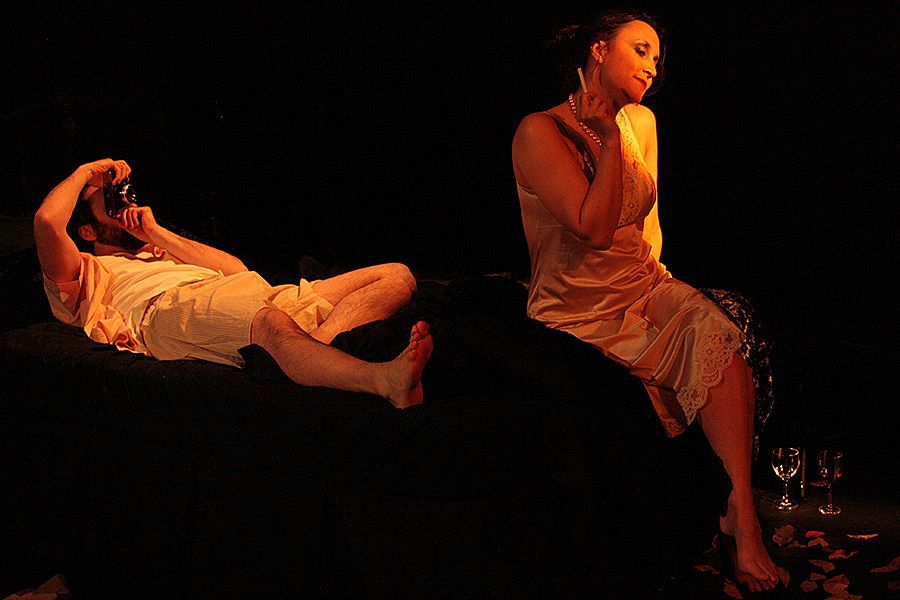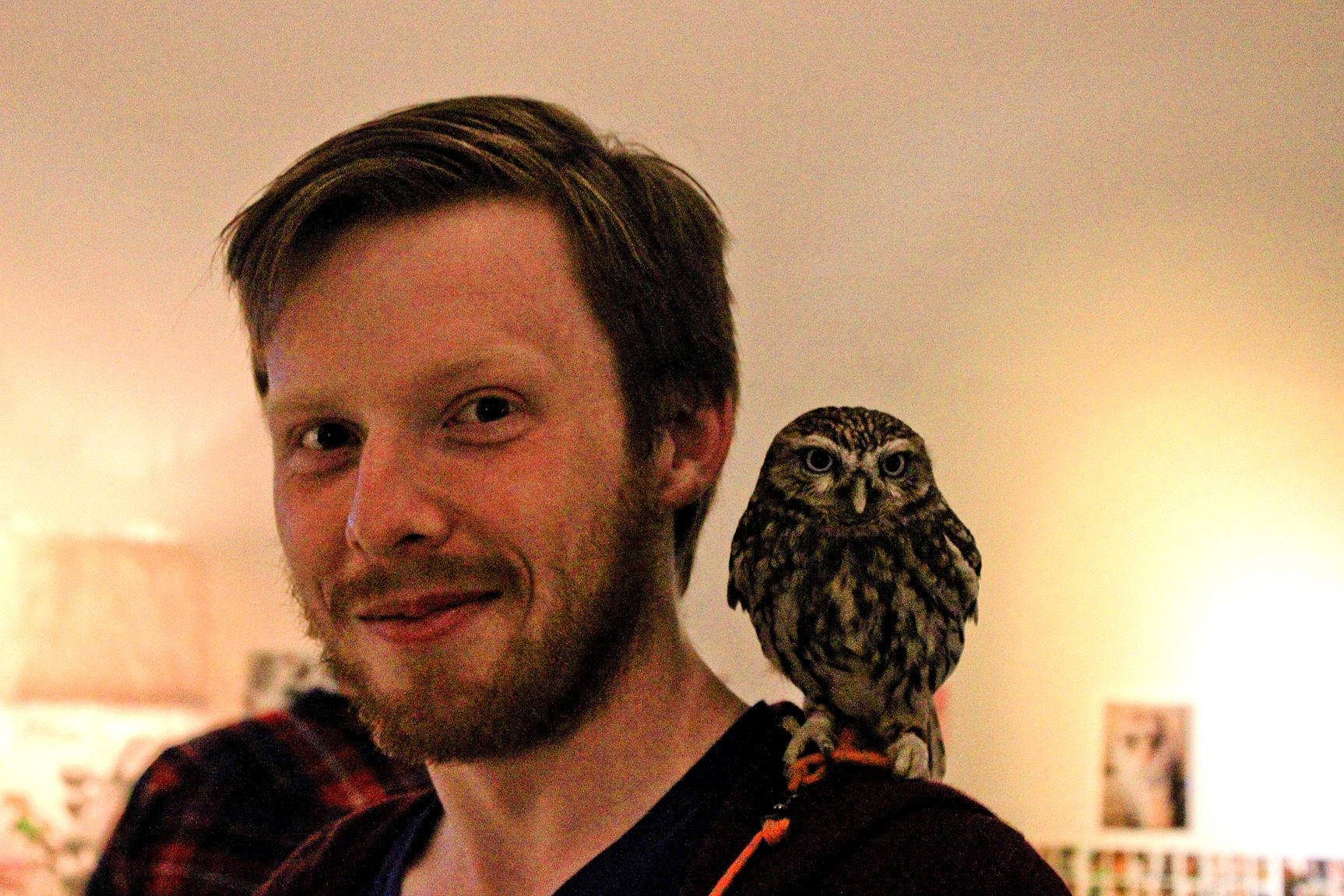Review: Hold Me
Adam Goodall reviews Hold Me, the twisty and ambitious new play from Emily Duncan, at BATS Theatre.
Adam Goodall reviews Hold Me, the twisty and ambitious new play from Emily Duncan, at BATS Theatre.
In the third of four stories told in Hold Me, one character says to another, “I have a feeling I do know you.” It’s one of the only times that the characters acknowledge that there might be something stranger at the heart of this surreal and time-leaping drama, a hint that the echoes in each chapter may be more than just echoes. The line’s obvious but the moment is refreshingly eerie, jarring the scene like a record needle hitting a scratch in the vinyl. This glitch in the fabric of this time and space goes unexplained, leaving the quality of this strangeness to the audience’s imagination. That’s a jarring decision too, but not in the same way.
Written by much-lauded Dunedin playwright Emily Duncan and directed in its premiere by Tabitha Arthur, Hold Me jumps back and forth through the last century, landing at moments in the lives of four sets of Londoners, all played by Raquel Roderick, Kirsty Bruce and Alex Greig. In 1954, a spurned woman (Roderick) reflects on the cheap remnants of a marriage that’s fallen apart under the weight of her partner’s affair. In 2007, a flirtatious cancer survivor (Bruce) and her high-strung ex (Greig) meet for coffee three years after their brutal break-up. In 1975, an aristocrat (Roderick) has a fling with a working-class photographer (Greig). Finally, in 1922, a paralysed patriarch (Greig) whiles away his time on his country estate stewing over his family tree, a branch of which he suspects has been broken.
This is all clearly divvied up and signposted: each chapter opens with a voiceover telling us the year and location, and the language and reference points of the protagonists morph to fit. But Duncan’s century carries numerous echoes – some obvious (the characters share names – ‘Grace’ (Roderick), ‘Erik’ (Greig) and ‘Stanza’ (Bruce)), and some not.
Duncan uses these motifs to blur the lines between the real and the metaphorical, calling attention to the similarities and differences in the lives, personalities and appearances of each Grace, Erik and Stanza. The Grace we encounter in a ratty fox-fur coat, discarded for another woman, transforms into an old-money trophy wife who describes her adultery as ‘patronage’; an Erik who protests to his ex-lover that his wife is “important to him” runs up hard against an Erik long past, one who buried himself in genealogy to mask his disdain for his wife.
Hold Me’s ambition, though, is in the way it weaves its ideas and thematic concerns through this multi-decade tapestry. Every Grace, Erik and Stanza feels an acute emptiness that they’re desperate to fill, and Duncan takes her time to explore what they’ve lost and the ways they’ve tried to replace those missing things: sex, money, art, family (as a safety net or as heraldry), the past. She dwells, too, on the lingering shadows that define their lives. Those shadows can be conventional - lost loves, war – but Duncan’s inquisitive and poetic when focussing on the Western class system and capitalism’s inexorable 20th century creep. These Graces, Eriks and Stanzas bend their lives to fit a system of worth defined by their wealth, fitfully transgress against it, or glower at anyone who gets a bit of revolution in them.
Duncan brings this clash to life with surprising venom and empathy in 1975, when Erik talks about the first painting he ever saw. Erik relates its little details with an uncharacteristic romance, staring into the heavens as he talks. Upper-class Grace initially ignores him, focussing on his career, but later, she presumes to bring him low, telling Erik what the painting’s called and what it depicts as if to educate him, “I think you’ll find that it wasn’t,” Erik shoots back, correctly naming the painting and mocking her for assuming he doesn’t know anything about art because he’s working-class. He gets a final dig in as he describes the painting, ‘Bathers at Asnières’, again: “None of your lot had their kit off, if I remember rightly.”
The dialogue (and the volume of it) regularly pushes Roderick, Bruce and Greig into telegraphed and uncomplicated acting choices, serving up recollections without any shade and arguments without any warmth.
Moments like this are the minority, though. Duncan insists on giving every idea and emotion its time in the sun, pushing themes and emotions to the foreground, speaking to them and explaining them. Rather than letting the behaviour of each Grace, Erik and Stanza speak for itself, Duncan’s script telegraphs how each of them once felt about whatever’s relevant, how they feel now, how they’re processing whatever’s just happened and is about to happen.
There are parts of Duncan’s dialogue that are elegant, arch and hypnotic to listen to, like when 1922 Erik talks about his family tree. A sharp, metallic breathing labours in the background as he plays with the idea of the ‘stet’ in genealogy, describing his ancestry in self-lacerating terms: “My family’s history is sprinkled with stets. Let the errors stand.” Too often, though, the dialogue is declarative and repetitive, couching its emotional exposition as “home truths” or secrets revealed in an internal monologue. Even smaller images and psychological beats are saddled with the burden of explanation – a line about how 2007 Stanza’s ovaries were removed during her treatment for breast cancer, for example, is followed with the clunky “Which meant that I couldn’t have children, and as you were the person that I wanted to have children with, then that was that.”
These declarations translate into equally declarative performances and design. Roderick, Bruce and Greig are pushed into telegraphed and uncomplicated acting choices, serving up recollections without any shade and arguments without any warmth. Roderick struggles against the riptide – her body language can feel small and noncommittal and her lack of urgency in 1975 causes the scene to fall slack.
Bruce and Greig give more nuanced performances, particularly during the first half of 2007, when Bruce’s slightly desperate suggestiveness and Greig’s mannered stiffness wedge an effectively tense distance between them. The second half of 2007 strands them, though, a limp seven-minute recital of how they feel about everything they’ve shared and lost (a superfluous recital, too, after the two lengthy lip-sync interludes that precede the moment, telling us clear as day what’s on Erik and Stanza’s minds).
Arthur and Harriet Denby’s production design, faded and opulent, gives the action some gravitas, like we’re watching a slideshow of someone’s important memories. That’s complemented by the sepia-tinted yellow that defines Audrey Morgan’s lighting design. Morgan’s design is too beholden to the script, though, jerking from one colour and tone to another when the emotions run high. 1975 Erik’s speech about the painting is almost scuttled when the yellow turns into a soft spotlight, then into blues and reds that slice through the back of the stage. It undercuts the moment in an attempt to underline it.
Duncan doesn’t trust things to go unsaid in Hold Me, which is an admirable way to live but an undoing here. Arthur, her cast and her crew work hard to infuse the play with intrigue and ambiguity, but the dialogue tells them where to go and what to play so often that they struggle to build that emotional uncertainty into it. Hold Me is an ambitious and bold project. When Duncan gives the audience room to breathe, to lean back into the images she paints and consider their darkened corners, she pulls off some stylish and audacious coups. Too much of the time, though, Hold Me shines the brightest spotlight available on those corners, scaring away what made it enticing in the first place.
Hold Me runs at
BATS Theatre, Wellington
from Tuesday 6th to Saturday 10th September
For tickets to and more information about Hold Me, go here.

